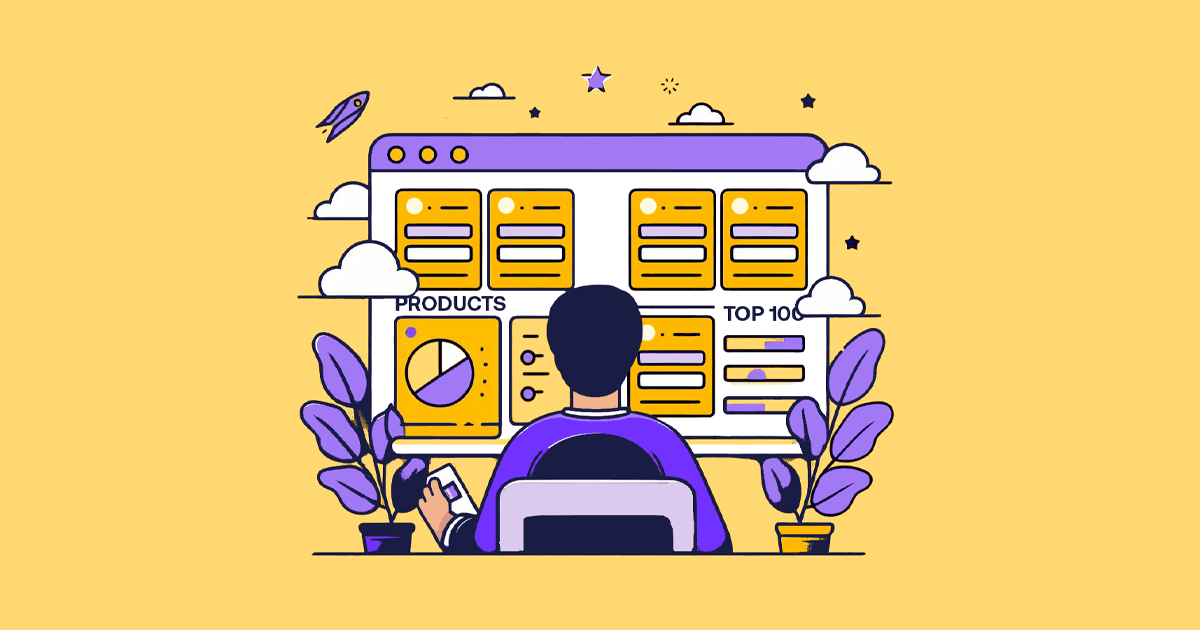MARKETING AUTOMATION
Get an Automated Report on Your Top 100 Products
26.03.2024

Imagine being able to create a fully automated report on the top 100 products in your online shop and at the same time take into account performance and clicks in Google Ads or Google Shopping. That is not a thing of the future, but one of our flows in Shopstory. The insights gained from this report can help you eliminate wasted advertising budget, while automating and optimizing your advertising campaigns based on your most popular products. This sounds like a no-brainer, but many companies invest money in ineffective shopping ads without even realizing it. That's why we've developed an automated product ranking report for your top 100 products in Google Shopping, which relieves online stores, especially those with hundreds or thousands of products, this load. The flow ranks your top 100 performers based on the conversion value and maps out recent clicks to get a quick overview of your ads and enable strategic decisions.
In this article, we'll show you how Shopstory generates reports on your product rankings in just a few minutes and how you can use them to save time and money for your business.
The Challenge
Nico is a dedicated marketer (and a child at heart) at a popular toy store in London. Their mission is to bring joy to children of all ages, and they stand out for their diversity and quality. But like many industries, toy stores also had a challenging year. The rising costs of raw materials have recently slashed their profit margins. One of the toughest decisions management had to make was cutting their marketing budget.
With his thinking hat on, Nico dedicated a week to analyzing campaign performance over the past year to see how he could get as far as possible with his remaining budget. He was shocked to learn that 35% of his advertising budget was spent on toys that yielded no results. Not only did the department lose significant revenue, but they also missed the opportunity to scale their bestsellers even further. With thousands of products, it was neither feasible nor efficient for Nico to do a manual analysis every month or quarter. But the data-driven campaign analysis gave him such clarity that he immediately knew which campaigns to pause, close, or scale. He just wished he could clone himself to double his execution power. But he is certain that he will soon find smarter ways to work with the AI revolution.
The Solution
Nico's gut feeling was absolutely right when automation came along. After reading that Shopstory can automate many ecommerce and marketing tasks, he quickly booked a demo. During the call, he checked out the Flow library and voila! He found the exact flow that would automatically analyze the toy store's top-performing products – and the best part – in minutes!
How, you ask? By compiling campaign data from the last 12 months, the no-code platform provides an accurate ranking of the top 100 products based on the conversion value from the ads. And it does this lightning fast, without the need for manual data collection or sorting.
Here are the apps that Shopstory integrates into the process:
- Google Ads: Performance data, such as the conversion value of products and the number of clicks, are extracted from campaigns every day.
- Google Sheets: The data is then exported and processed in Google Sheets to create a visual overview and list of rankings, as well as a map of clicks per product.

Figure 1: Our automated flow in Shopstory, which ranks the top 100 products based on the conversion value from Google Ads over the past year.
Executing the flow is much easier than the figure above (there are just a lot of iterations/repetition steps)! It is triggered daily and creates a current ranking of the bestsellers of the last 365 days.
In addition, the visual mapping of the number of clicks per product allows a quick health check of activity. If there is a sudden drop in clicks on top products, it could indicate that an item is out of stock, there is a feed problem, a change or replacement to a product line was made by mistake, a change in strategy, or an error in the ad setup. This allows online shops to quickly identify and address the problem, which might otherwise go unnoticed.

Figure 2: You will receive an automated report in Google Sheets that shows performance data for the products in the past year and the number of clicks in the past week.
As soon as the flow was up and running, Nico became unstoppable. He used other ready-to-use Shopstory flows to automate Google Search Console reports, set rules to automatically pause low-poorly performing Google keywords, and smartly categorize the toys based on their performance using the Labelizer Flow.
Conclusion
Automated reports on the performance of the top 100 products will change the way marketers work. In minutes, Shopstory provides online shops a clear overview of their bestsellers (and money drainers). This not only saves time and money, but also enables data-driven decisions that help online shops scale with the same or fewer resources. Shopstory empowers marketers like Nico to optimally maximize the potential of targeted ads and products for the right target group. With data, automation, and the right tool, tedious reporting and tasks will soon be a thing of the past.
In the ever-evolving world of ecommerce & marketing, it's crucial to stay ahead of your competition. Take advantage of marketing automation with Shopstory to optimize your advertising campaigns, save time and resources, and get back to focusing on what's most important — the success of your business.
Interested in marketing automation and would like to find out more about our Shopstory software? Follow the link below to learn more:
More to Explore
Discover more insights from our latest articles
© 2025, Shopstory









